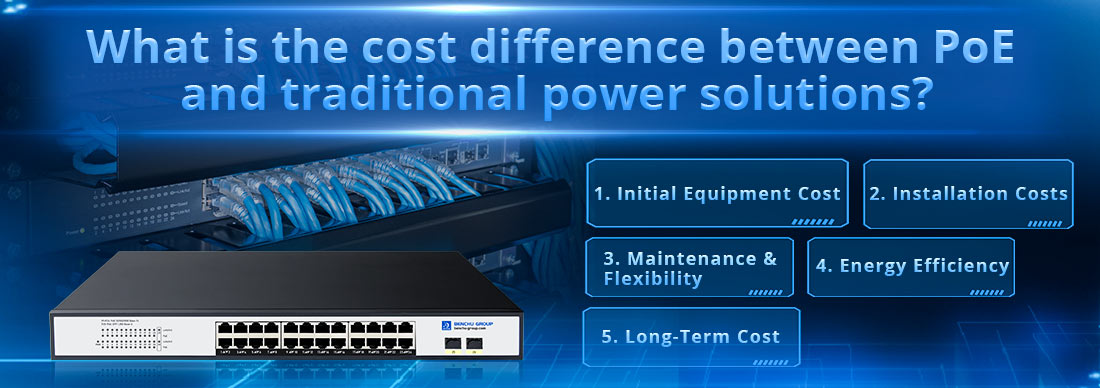
The cost difference between Power over Ethernet (PoE) and traditional power solutions primarily depends on several factors, such as installation complexity, equipment costs, and long-term maintenance. Here’s a breakdown:
1. Initial Equipment Cost
PoE: PoE switches and PoE injectors tend to have higher upfront costs compared to non-PoE switches. This is because PoE devices include additional circuitry for power delivery.
Traditional Power Solutions: Devices using traditional power require separate power supplies, such as power adapters, which are usually lower in cost but add to the number of required components.
2. Installation Costs
PoE: Installation is generally more cost-effective, as data and power are delivered over a single Ethernet cable. This reduces the need for electrical outlets near each device, saving on both wiring and labor costs.
Traditional Power: With traditional power, you'll need separate power lines for each device, which increases installation time, complexity, and cost, especially in areas where running electrical power is difficult.
3. Maintenance & Flexibility
PoE: PoE is easier to maintain, as there’s no need for separate power infrastructure, and it offers more flexibility for device relocation without requiring rewiring.
Traditional Power: Traditional solutions often involve more complex maintenance, especially if devices are placed far from power outlets.
4. Energy Efficiency
PoE: PoE systems can be more energy-efficient, as they enable centralized power management and can reduce energy consumption by powering down devices when not in use.
Traditional Power: Traditional power adapters can consume more energy, even when devices are idle.
5. Long-Term Cost
PoE: Although PoE has higher initial hardware costs, the total cost of ownership may be lower due to savings in installation, cabling, and maintenance.
Traditional Power: Separate power systems can have higher long-term costs due to maintenance and less efficient energy use.
Conclusion:
--- PoE may have a higher upfront cost due to specialized switches and injectors but often results in lower overall costs in terms of installation and long-term maintenance.
--- Traditional power solutions have lower upfront costs but may incur higher expenses over time for installation, energy, and maintenance.
For large-scale installations, PoE is usually more cost-effective and flexible in the long run, while traditional power may be cheaper for small-scale or individual setups.